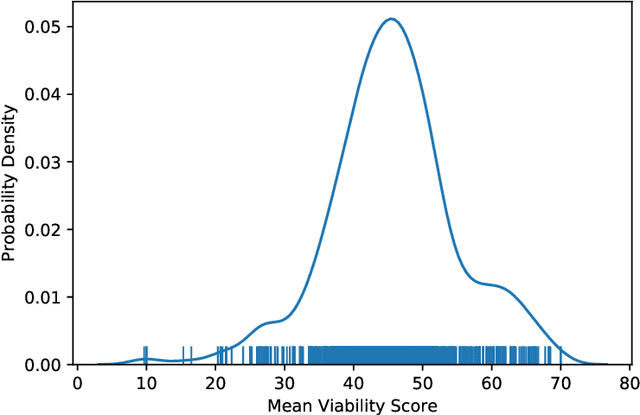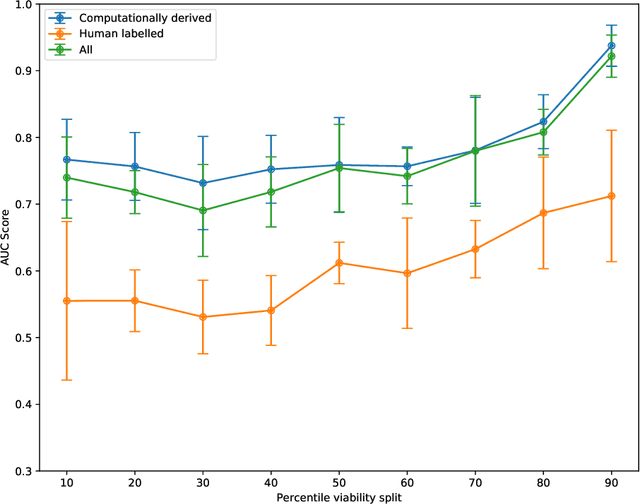Yu Jin Lee
My Team Will Go On: Differentiating High and Low Viability Teams through Team Interaction
Nov 03, 2020



Abstract:Understanding team viability -- a team's capacity for sustained and future success -- is essential for building effective teams. In this study, we aggregate features drawn from the organizational behavior literature to train a viability classification model over a dataset of 669 10-minute text conversations of online teams. We train classifiers to identify teams at the top decile (most viable teams), 50th percentile (above a median split), and bottom decile (least viable teams), then characterize the attributes of teams at each of these viability levels. We find that a lasso regression model achieves an accuracy of .74--.92 AUC ROC under different thresholds of classifying viability scores. From these models, we identify the use of exclusive language such as `but' and `except', and the use of second person pronouns, as the most predictive features for detecting the most viable teams, suggesting that active engagement with others' ideas is a crucial signal of a viable team. Only a small fraction of the 10-minute discussion, as little as 70 seconds, is required for predicting the viability of team interaction. This work suggests opportunities for teams to assess, track, and visualize their own viability in real time as they collaborate.
* CSCW 2020 Honorable Mention Award
 Add to Chrome
Add to Chrome Add to Firefox
Add to Firefox Add to Edge
Add to Edge